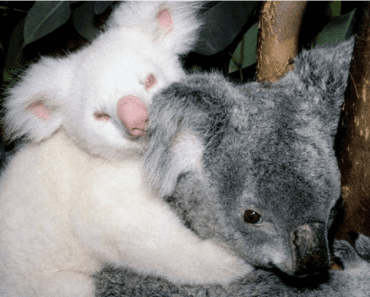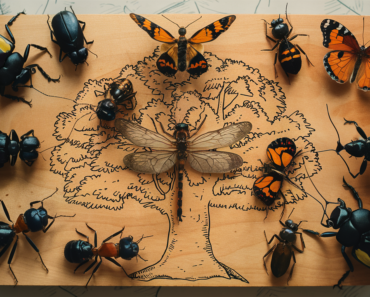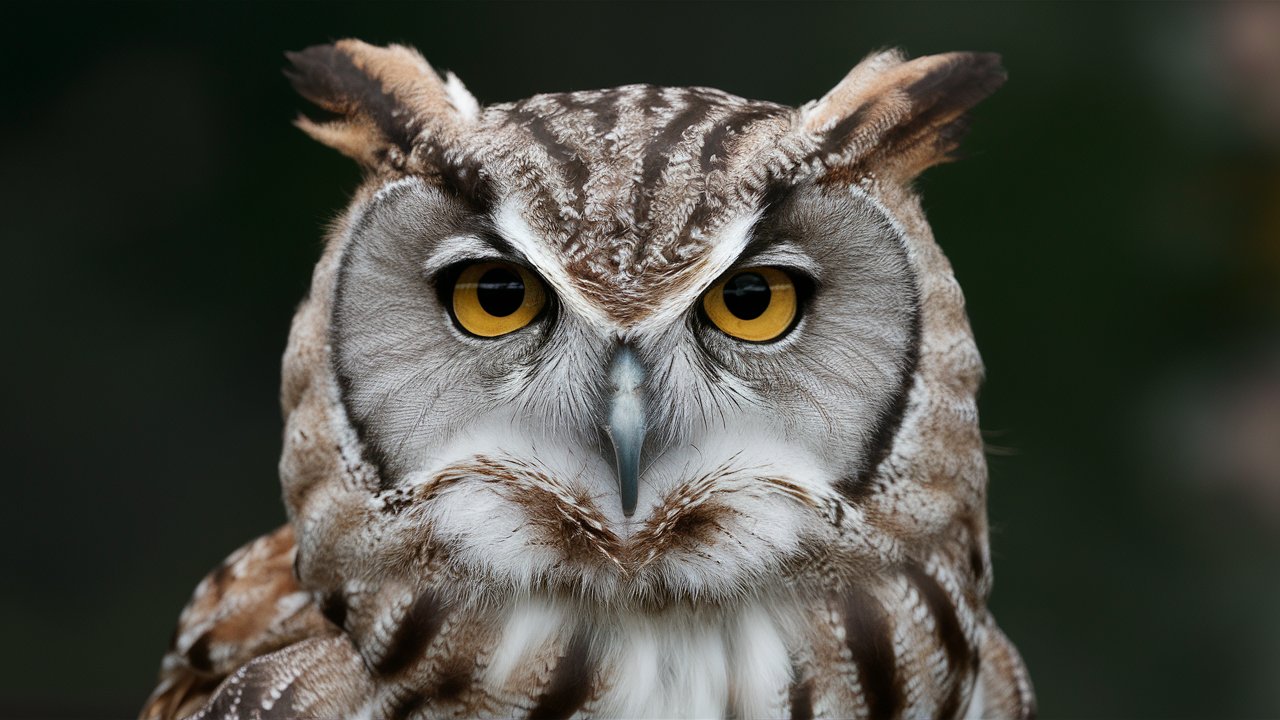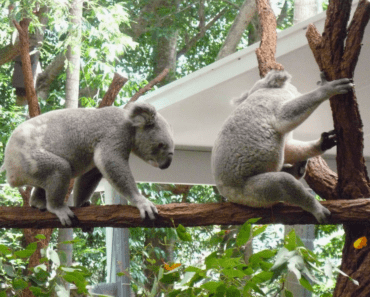Koalas, often mistaken for bears due to their fuzzy appearance, are marsupials native to Australia. They are a beloved symbol of the country’s wildlife and are known for their unique sleeping habits. Understanding why these adorable creatures spend most of their time dozing can shed light on their lifestyle, diet, and the environmental challenges they face.
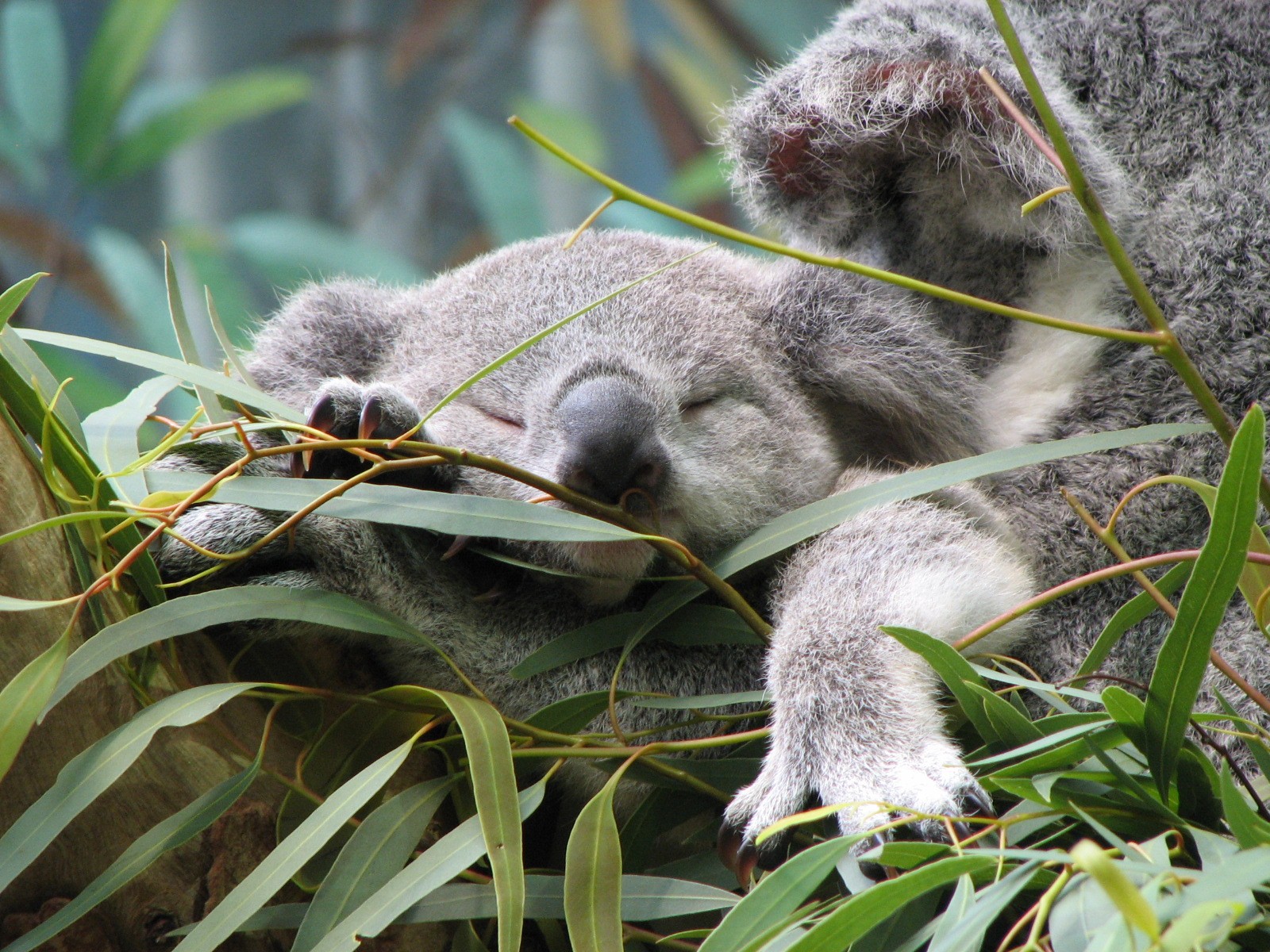
Sleeping Koala
Why Do Koalas Sleep So Much?
Koalas are infamous for their long sleeping hours, often resting for up to 18-22 hours a day. This extensive sleep schedule is primarily due to their diet. Eucalyptus leaves, which make up the bulk of a koala’s diet, are low in nutrients and high in fibrous content, requiring a significant amount of energy to digest. This energy-intensive digestion process leaves koalas with little choice but to conserve energy through prolonged periods of sleep.
Koala Sleep Cycle
Duration and Patterns of Koala Sleep
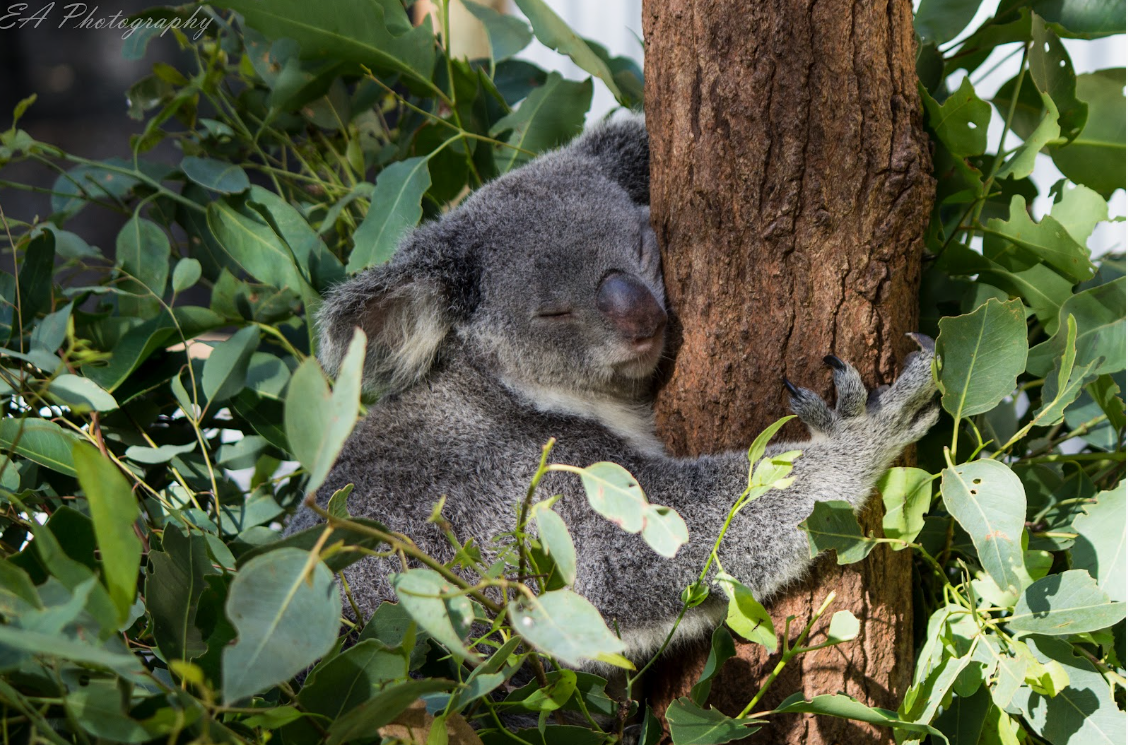
Koalas exhibit polyphasic sleep patterns, which means they sleep multiple times throughout a 24-hour period rather than having a single extended rest period. Their sleep is characterized by short bouts of rest interspersed with brief periods of activity, mainly to eat and move to different branches. Unlike many other animals, koalas do not follow a strict day-night cycle and can be active at various times, though they are mostly nocturnal.
The Role of Eucalyptus in Koala Sleep
Nutritional Content and Its Effects
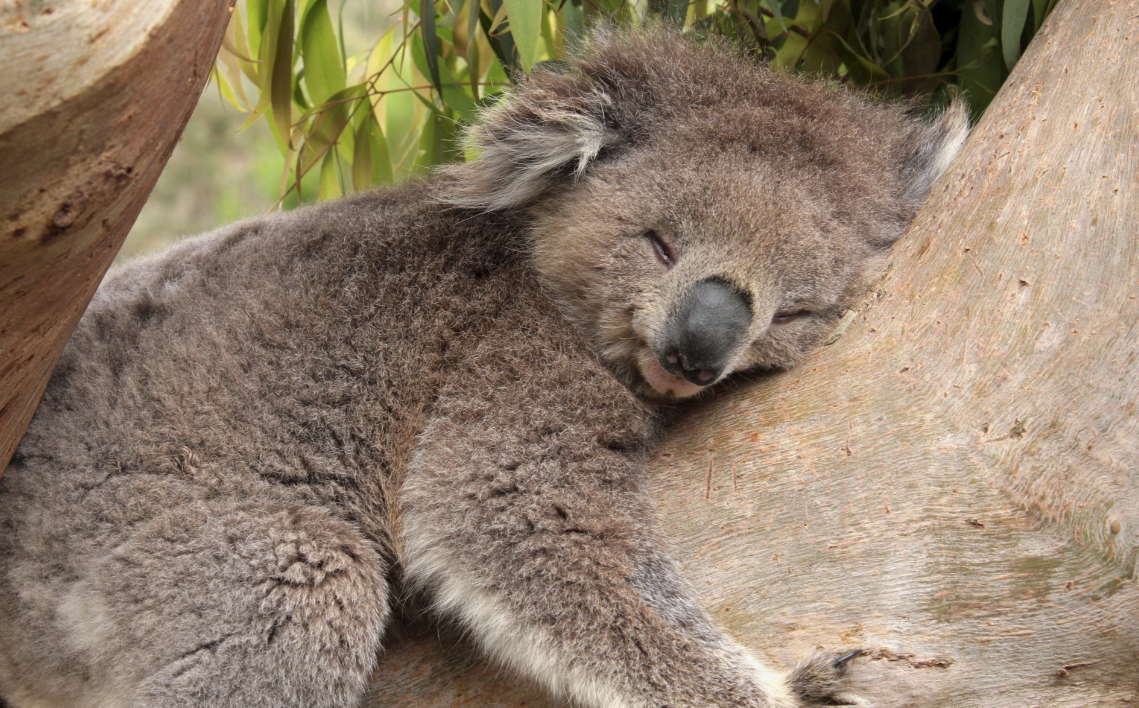
Eucalyptus leaves are rich in toxins and are difficult to digest. Koalas have a highly specialized liver that detoxifies the harmful substances in their diet. Despite this adaptation, the low caloric content and high fiber mean that koalas must consume large quantities of leaves to meet their energy needs. The lethargy induced by their diet necessitates extensive sleeping hours to aid in digestion and reduce the need for physical exertion.
Sleeping Positions
Common Postures of a Sleeping Koala
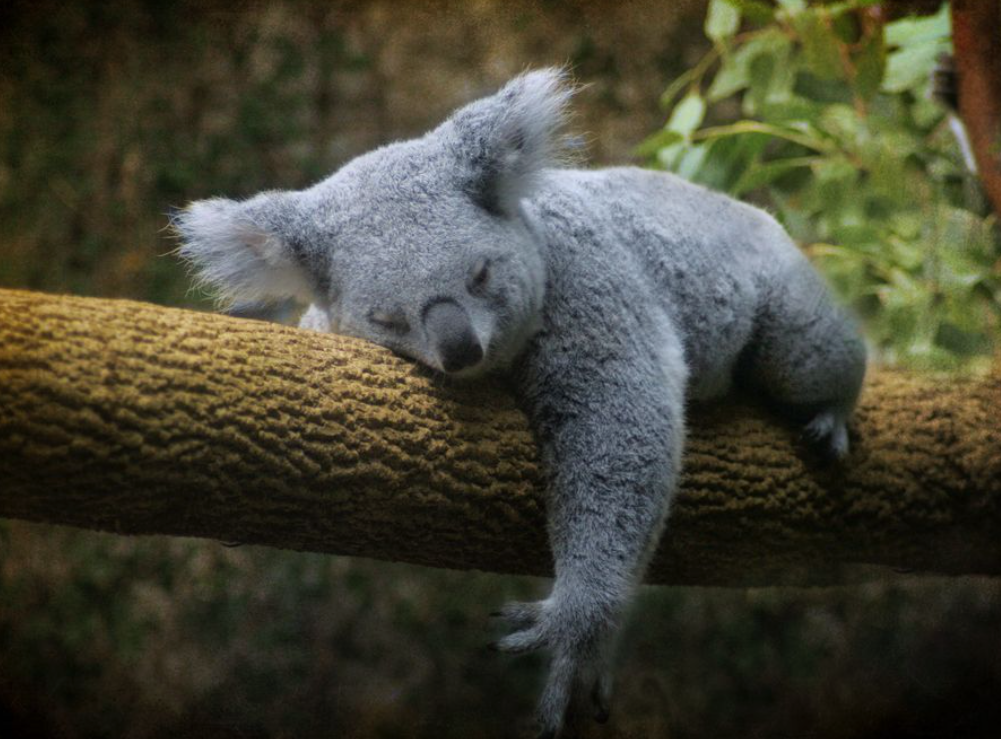
Koalas are often seen in various sleeping positions, clinging to tree branches or nestled in the forks of trees. Their strong limbs and sharp claws enable them to secure themselves in seemingly precarious positions, ensuring they remain safe from predators and environmental hazards while they sleep. The most common positions include the “cuddled ball,” where they curl into a tight ball to conserve body heat, and the “sprawled out,” where they lay across a branch, allowing maximum relaxation.
How Do Koalas Choose Their Sleeping Spots?
Factors Influencing Location Choice
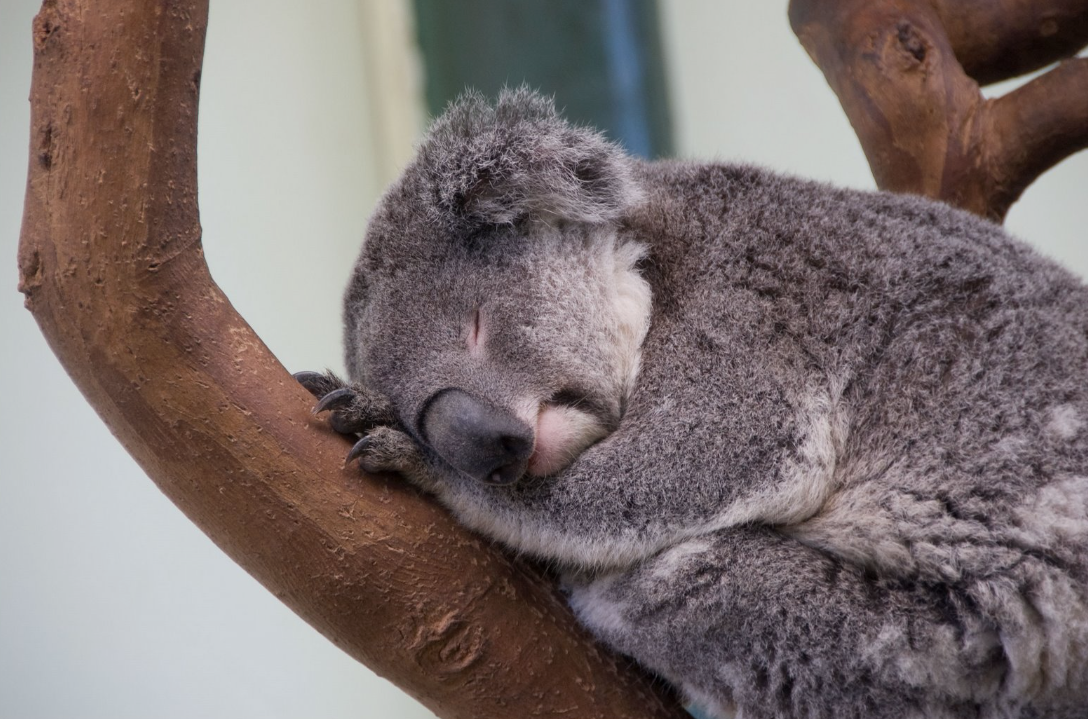
Koalas are arboreal creatures, spending most of their lives in trees. When selecting a sleeping spot, they consider several factors, including the tree’s height, the presence of dense foliage for shade, and the proximity to a food source. Koalas prefer tall eucalyptus trees, as these offer better protection from ground predators and provide ample leaves for sustenance. The selection of a comfortable and safe resting spot is crucial for their well-being.
Impact of Sleep on Koala Health
Physical and Mental Benefits
Adequate sleep is essential for koalas to maintain their health. Sleep aids in the efficient digestion of eucalyptus leaves, allowing their bodies to extract necessary nutrients. Additionally, sleep helps regulate their body temperature and supports their immune system. Mental health is also bolstered by sufficient rest, as it reduces stress and enables them to remain alert during their waking hours to detect potential threats.
Adaptations for Arboreal Sleeping
Anatomical and Behavioral Adaptations
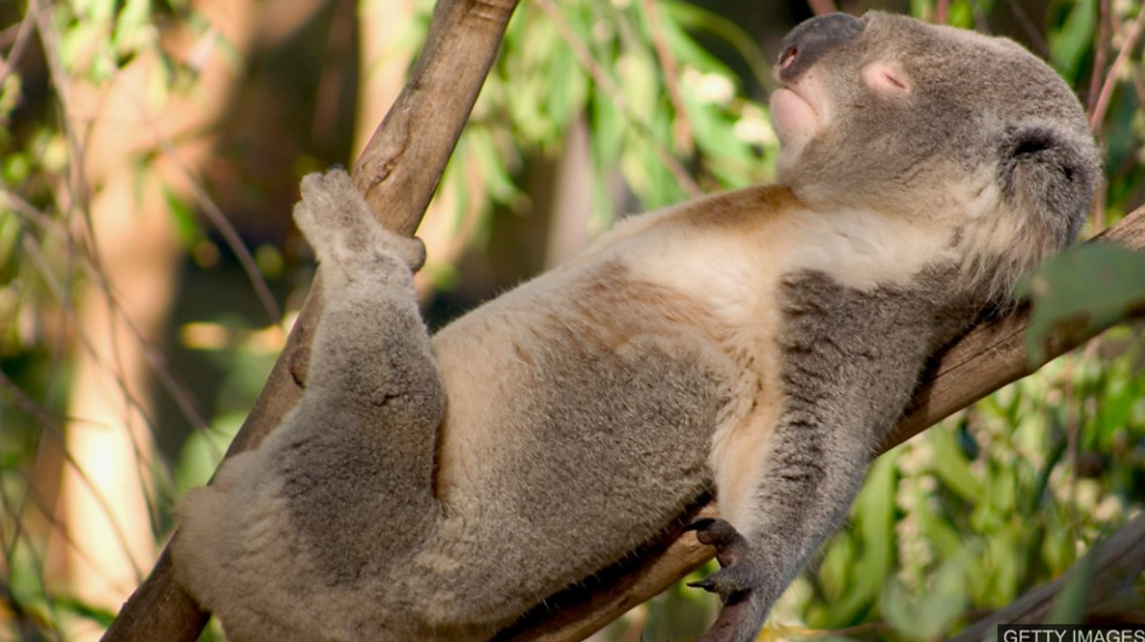
Koalas have evolved several adaptations to facilitate their arboreal lifestyle. Their sharp claws and strong limbs provide the necessary grip to hold onto branches securely. The padding on their paws and the curved shape of their spine enable them to sit comfortably for extended periods. Behaviorally, koalas have developed a slow and deliberate movement pattern that conserves energy and reduces the risk of falling.
Sleeping Koala vs. Other Marsupials
Comparative Analysis
While many marsupials, such as kangaroos and wallabies, are known for their high activity levels, koalas stand out for their extensive sleeping habits. The primary difference lies in their diet and habitat. Kangaroos and wallabies graze on a variety of plants, providing them with more energy and requiring less sleep. In contrast, the koala’s exclusive diet of eucalyptus necessitates more rest to manage the demanding digestion process.
Myths and Misconceptions
Debunking Popular Beliefs
Several myths surround the sleeping habits of koalas. One common misconception is that they sleep so much because they are lazy. In reality, their sleep is a vital adaptation to their nutrient-poor diet. Another myth is that koalas are nocturnal by necessity; while they are predominantly active at night, they can be seen foraging during the day as well.
Conservation Concerns
Effects of Habitat Loss on Sleep
Habitat destruction poses a significant threat to koalas, impacting their ability to find suitable sleeping spots. Deforestation and urbanization reduce the availability of eucalyptus trees, forcing koalas into smaller and less ideal areas. This habitat loss not only affects their sleep but also their overall health and survival, as it limits their food sources and increases exposure to predators and human threats.
Human Interactions
How Human Activity Affects Koala Sleep
Human activities, such as land development and tourism, can disturb koalas’ sleep patterns. Noise pollution, habitat encroachment, and the presence of humans can cause stress and reduce the quality of their rest. Conservation efforts must prioritize minimizing human impact on koala habitats to ensure these animals can maintain their natural sleep behaviors.
Interesting Facts About Sleeping Koalas
Lesser-Known Facts
Despite their sleepy reputation, koalas are fascinating creatures. Did you know that koalas have a highly developed sense of smell that helps them select the best eucalyptus leaves? Or that their sleeping positions are so efficient that they can remain stable even during strong winds? These and many other interesting facts highlight the unique adaptations of these endearing marsupials.
The Science Behind Koala Sleep
Research and Studies
Scientific studies have delved into the sleeping habits of koalas to understand their unique lifestyle better. Research has shown that koalas have a lower metabolic rate compared to other mammals, which is another reason for their prolonged sleep. Ongoing studies continue to explore the relationship between their diet, sleep patterns, and overall health, providing valuable insights into their conservation needs.
Observing Koalas in the Wild
Best Practices for Wildlife Enthusiasts
For those interested in observing koalas in their natural habitat, it is essential to follow certain guidelines to minimize disturbance. Observers should maintain a respectful distance, avoid making loud noises, and refrain from touching or feeding the animals. Visiting protected areas and participating in guided tours can enhance the experience while ensuring the well-being of the koalas.
The Cultural Significance of Koalas
Koalas in Indigenous and Modern Culture
Koalas hold a special place in both Indigenous Australian culture and modern society. Indigenous stories often feature koalas, attributing them with various spiritual meanings. In contemporary culture, koalas are a symbol of Australian wildlife conservation and are frequently used in media and tourism campaigns to raise awareness about environmental issues.
Baby Koalas and Sleep
Developmental Stages
Baby koalas, known as joeys, have different sleep needs compared to adults. After birth, joeys spend several months in their mother’s pouch, sleeping and growing. As they mature, they begin to venture out, clinging to their mother’s back while continuing to sleep extensively. The sleep patterns of joeys are crucial for their development, ensuring they grow strong and healthy.
Seasonal Sleep Patterns
Variations Throughout the Year
Koalas’ sleep patterns can vary with the seasons. During the hotter months, they may sleep more to avoid the heat, staying in shaded areas to keep cool. In cooler weather, they might be more active, as the lower temperatures help them manage their body heat better. Understanding these seasonal variations is essential for their conservation and management.
Protecting Koala Habitats
Conservation Strategies
Conservation strategies to protect koala habitats are vital for their survival. Efforts include reforestation projects, creating wildlife corridors, and implementing policies to reduce deforestation. Public awareness campaigns and community involvement play a crucial role in these conservation efforts, ensuring that koalas have a safe and sustainable environment.
Koalas in Captivity
Differences in Sleep Habits
Koalas in captivity, such as those in zoos and wildlife sanctuaries, often have different sleep habits compared to their wild counterparts. These koalas may have more consistent access to food and fewer threats from predators, potentially leading to less sleep. However, captivity can also introduce stress factors that affect their natural behaviors, underscoring the importance of providing a habitat that closely mimics their natural environment.
FAQs About Sleeping Koalas
Why do koalas sleep so much? Koalas sleep extensively to conserve energy due to their low-nutrient diet of eucalyptus leaves, which requires significant energy to digest.
How long do koalas sleep each day? Koalas can sleep for 18-22 hours a day, with their sleep spread out in multiple sessions rather than one long period.
Do all koalas sleep the same amount? While most koalas have similar sleep patterns, individual sleep durations can vary based on age, health, and environmental factors.
What happens if koalas don’t get enough sleep? Insufficient sleep can affect a koala’s health, leading to issues with digestion, stress, and increased vulnerability to predators.
How do human activities impact koala sleep? Human activities such as deforestation, noise pollution, and habitat encroachment can disturb koalas’ sleep patterns, causing stress and reducing their overall well-being.
Are koalas nocturnal? Koalas are primarily nocturnal but can be active during the day as well, depending on their environment and food availability.
Conclusion
In conclusion, the sleeping habits of koalas are a fascinating and vital aspect of their biology. These marsupials have adapted to a diet that requires them to conserve energy through extensive sleep, enabling them to thrive in their eucalyptus-filled habitats. Understanding and protecting their sleep patterns is essential for their conservation and overall health. By raising awareness and implementing effective conservation strategies, we can ensure that these enchanting creatures continue to be a symbol of Australia’s unique wildlife for generations to come.
Are Koalas Scary? The Truth Behind the Myths


